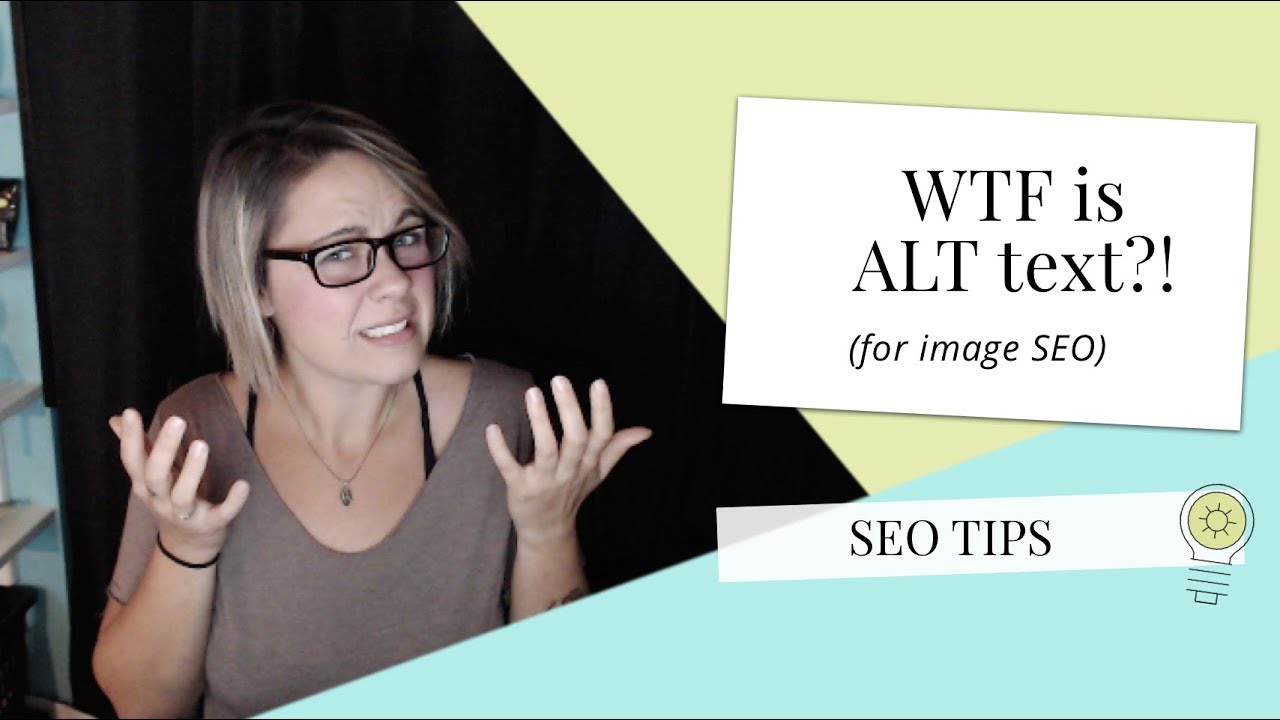Alt text is a type of HTML attribute that provides alternative text descriptions for images, audio, and video elements on a webpage.
Alt text is primarily used to describe visual contentto people who are visually impaired or have low vision and rely on screen readers or other assistive technology to access web content.
The Alt text for imagesalso helps search engines understand the content of an image and improve the SEOof a webpage.
Why Alt Text Is Important?
Alt text plays a critical role in making web content accessible to everyone. Without alt text, users with visual impairments may not be able to understand the content of an image and miss out on important information.

What is ALT text? Why is it important for image SEO? (+ EXAMPLES)
Alt text also helps users with slow internet connections or those who have disabled images to understand the context of the image.
Alt text also helps search engines index images and improve the visibility of a webpage. Search engines cannot "see" images, so they rely on alt text to understand the content of the image and match it with relevant search queries.
Properly optimized alt text can also improve the overall SEOof a webpage by providing context and relevant keywords to search engines.
How To Write Alt Text
Writing good alt text is important to ensure that your content is accessible and relevant to users and search engines. Here are some tips on how towrite effective alt text:
1. Be Descriptive
Alt text should provide a concise and accurate description of the image. Avoid vague or generic descriptions, such as "picture" or "image". Instead, use descriptive words to convey the content and context of the image.
For example, instead of "picture of a dog", use "black Labrador Retriever playing fetch in the park".
2. Keep It Short
Alt text should be brief and to the point. Aim for a maximum of 125 characters, including spaces. Screen readers can take longer to read longer descriptions, so keeping the alt text short and concise helps users navigate the content more efficiently.
3. Use Relevant Keywords
Include relevant keywords in your alt text to improve the SEOof your webpage. Use descriptive and relevant keywords that accurately reflect the content of the image. Avoid keyword stuffing or using irrelevant keywords, as this can harm the overall SEO of your webpage.
4. Don't Repeat Content
If an image is used multiple times on a webpage, use different alt text for each instance of the image. Repeating the same alt text can be confusing for users and may also be seen as spam by search engines.
5. Don't Use Placeholder Text
Avoid using generic placeholder text such as "image", "picture", or "photo" as alt text. This type of alt text does not provide any information about the content of the image and may confuse users or search engines.
6. Consider The Context
Consider the context of the image and how it relates to the content on the webpage. Alt text should provide relevant information about the image and its purpose on the page. For example, if the image is a chart or graph, the alt text should provide a summary of the data presented.
Common Mistakes To Avoid When Writing Alt Text
Alt text is a crucial element for web accessibilityand SEO. However, writing effective alt text can be a challenge, and there are several common mistakes that people often make. Here are some mistakes to avoid when writing alt text:
- Using Generic Descriptions- One of the most common mistakes when writing alt text is using generic descriptions such as "image", "picture", or "photo". This type of alt text does not provide any information about the content of the image and can be confusing for users. Instead, use descriptive language to convey the content and context of the image.
- Not Being Descriptive Enough- While it's important to keep alt text brief, it's equally important to be descriptive enough to provide users with an accurate understanding of the image. Avoid using vague or overly general descriptions and provide specific details that will help users understand the image's purpose and context.
- Keyword Stuffing- Including relevant keywords in your alt text can help improve the SEO of your webpage. However, overusing keywords or including irrelevant keywords can harm your web page's SEO and make your content less accessible. Focus on using descriptive and relevant keywords that accurately reflect the content of the image.
- Repetitive Alt Text- If an image is used multiple times on a webpage, it's important to provide unique alt text for each instance of the image. Repeating the same alt text can be confusing for users and may also be seen as spam by search engines. Provide unique descriptions for each instance of the image to ensure that users and search engines understand the context of each image.
- Ignoring the Image's Context- When writing alt text, it's important to consider the context of the image and how it relates to the content on the webpage. Alt text should provide relevant information about the image and its purpose on the page.
For example, if the image is a chart or graph, the alt text should provide a summary of the data presented. Ignoring the context of the image can make your alt text less effective and less accessible.
By avoiding these common mistakes and following best practices for writing alt text, you can ensure that your web content is accessible and SEO-friendly.
Remember to keep your alt text descriptive, concise, and relevant, and to provide unique descriptions for each instance of an image. With proper alt text implementation, you can make your content accessible to all users and improve the visibility of your webpage.
People Also Ask
How Long Should Alt Text Be?
Alt text should be concise, typically no more than 125 characters. However, it should also be descriptive enough to provide users with an accurate understanding of the image's content and context.
Can Alt Text Improve SEO?
Yes, alt text can improve SEO by providing search engines with relevant information about the content of the image. By using descriptive and relevant keywords in your alt text, you can increase the visibility of your content in search results.
Are There Any Tools Available To Check The Quality Of Alt Text?
Yes, there are several online tools available that can help you check the quality of your alt text. Some popular options include the WAVE Web Accessibility Evaluation Tool, the A11y Accessibility Checker, and the AXE Accessibility Testing Tool. These tools can help you identify and fix any issues with your alt text to ensure that your content is accessible to all users.
Conclusion
Alt text is a vital component of web accessibility and SEO. Writing descriptive, concise, and relevant alt text can make your content more accessible to users with visual impairments and improve the overall SEO of your webpage.
By following these tips, you can ensure that your alt text provides accurate and relevant information about the content of your images and improves the user experiencefor all visitors to your website.


